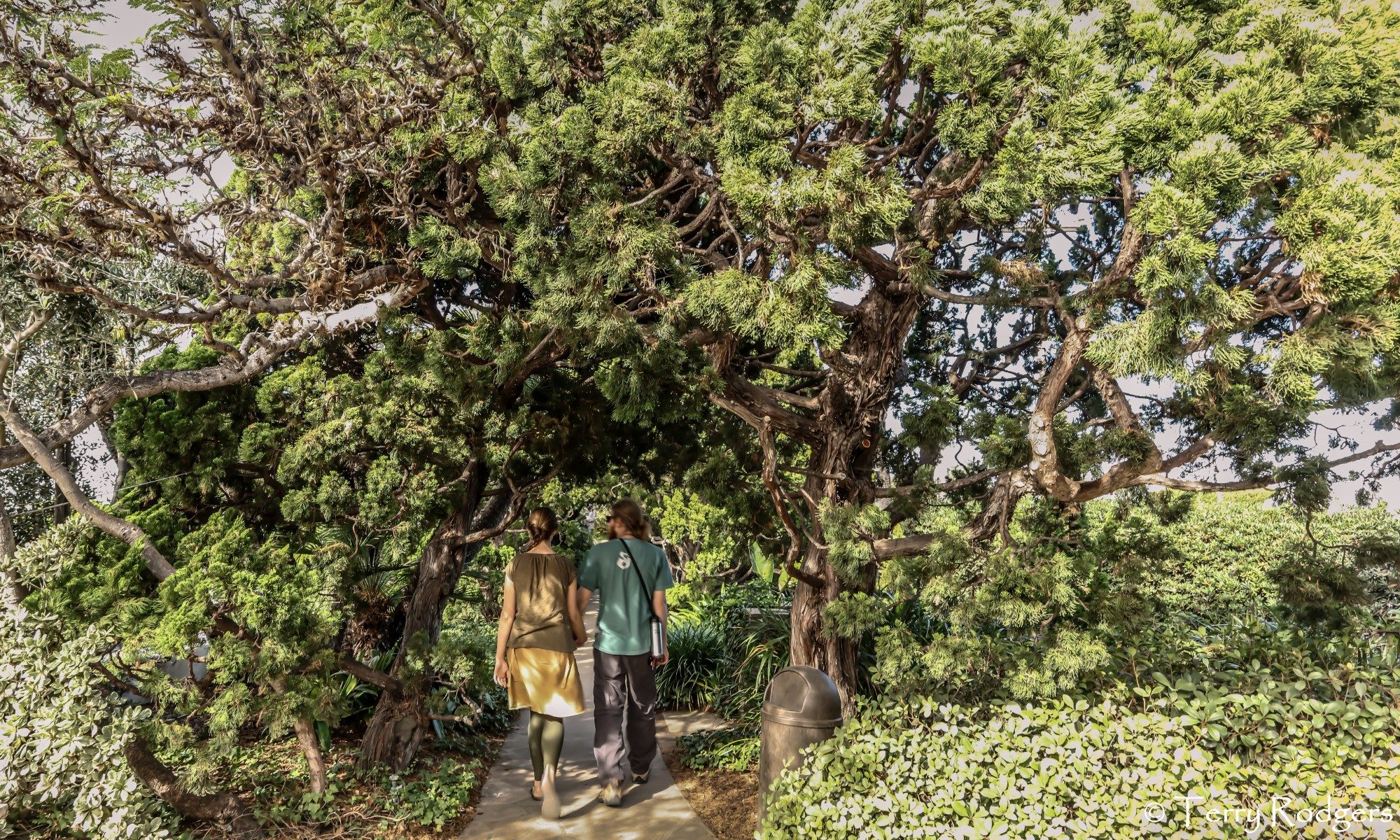The City of San Diego’s Environment Committee meeting on April 18, 2019 focused on urban forestry. City Forester Brian Widener, Community Forest Advisory Board Chair Anne Fege, and Balboa Park Conservancy Executive Director Tomas Herrera-Mishler gave presentations, followed by public comment by 31 community leaders and professionals and questions by committee members. Three presentations were items 6, 7, and 8 in April 18 agenda . The PDFs of the agenda, staff reports, and slides are assembled at Agenda_reports slides 24p
Committee Chair Jennifer Campbell (Chair, District 2) and councilmembers Barbara Bry (D1), Scott Sherman (D7), and Vivian Moreno (D8) repeated their appreciation for community and professional support for urban forestry, shared their support for healthy trees and neighborhoods, and asked what they can do (and we gave them suggestions). They inquired about water restrictions during drought, tracking tree conditions and loss, emerging pests, replanting trees after undergrounding utilities, permeable pavements, quality nursery stock, training tree care workers and contractors, and more.
ITEM 7. City Forester Brian Widener talked about FY 2018 accomplishments and upcoming challenges and opportunities, for street trees, parks and the overall urban forestry program. Public comments: Janay Kruger (Trees 1000 Foundation) talked about funding trees on private land. Andrew Meyer (Audubon), about habitat benefits for birds and other wildlife, and Frank Landis (California Native Plant Society) about multiple-benefits of native trees. Kathy Copley and her ASLA-American Society of Landscape Architects colleagues (Brett Allen, Phil Armstrong, Chris Drayer and Michelle Landis) expressed concern about inadequate soil volumes for tree health and advocated for updated standards and code enforcement.
ITEM 8. Community Forest Advisory Board (CFAB) chair Anne Fege emphasized the complexity of managing trees as City assets, and recommended four actions: (1) Engage communities in setting tree canopy priorities; (2) Initiate a long-term tree planting program; (3) Focus on codes and best management practices; and (4) Explore special districts and other financing options. One-page summaries at April 18 Four Actions .
Public comments: Muriel King and her neighbors (Nancy and Wes Janssen, Ray Buendia, Rodney West, and Britta Kuhlow) talked about their neighborhood beautification, 200 trees that were planted along major roads and in HOA area, and benefits of active leisure and community cohesion. Virginia Wilson thanked the city for planting 140 trees in Ocean Beach, and is now noticing more tree requests, that is, the trees are advertising themselves. Cody Petterson noted that there are large tree losses in canyons due to pests, that budgets continue to be inadequate. Rob Hutsel, SD River Park Foundation, described efforts to remove non-native trees and plant native trees-shrubs. Adrienne Heinzelman, SanDiego350.org, focused on the benefits of trees, increasing heat waves, pests and long-term tree health. Troy Murphree focused on needs for code compliance officer, which could pay for itself by collecting fines. Rachele Melious focused on tree watering and updating “point system” in land development code to reflect ecosystem benefits.
ITEM 9. Tomas Herrera-Mishler, Executive Director of Balboa Park Conservancy, gave an overview of the recent tree inventory, compared it to the inventories and goals set in 2001, and highlighted species diversity, tree conditions, and succession planning. Trustee Michael Yee (with time ceded by John Venekamp) focused on importance of this data, native trees, climate action, and pride for Balboa Park. Anne Fege suggested a “summit” to bring resources together.
VIDEO. The meeting video is archived at http://sandiego.granicus.com/MediaPlayer.php?view_id=51&clip_id=7686. Widener’s presentation starts at 0:47:30, Fege’s at 1:1:21:57; and Herrera-Mishler’s at 2:00:52. Each is followed by public speakers and dialogue with councilmembers. (On March 14, the committee focused on the Climate Action Plan and the meeting video is archived at http://sandiego.granicus.com/MediaPlayer.php?view_id=51&clip_id=7660, with 1-minute clip on resident with new street tree at 1:19:00, and urban forestry-related public comments at 1:21:20, starting with Fege.)
NEXT STEPS?
- Start thinking about a “Tree Summit” with public, business, nonprofit, community and professional sectors.
- Testify at FY 2020 budget hearings in early May to oppose the proposed reduction of $1.2 million for tree trimming.
- Set up or participate in meetings, or provide information for specific questions or interests (include SDG&E tree planting and Urban Corps training)
- Keep the “tree code revision group” moving w/ local professionals and City staff, then ask Council members to push the City to process them and then vote to approve changes.
- Continue to provide support for the City in projects they have limited staff for, such as further analysis of tree canopy analysis spreadsheets, potential technology applications, and collective actions for quality nursery stock.


